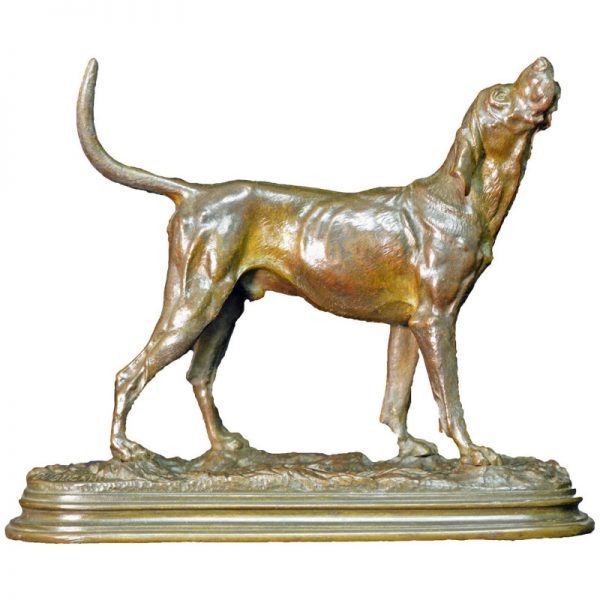
When the Black and Tan Coonhound was recognized by the AKC in 1945, we had 75 years to learn how to identify the breed, an effort made easier the Black and Tan being the only AKC recognized Coonhound for a long time. Some of us, however, became challenged when four more Coonhounds gained AKC recognition in four years (technically, it’s five in six years since the Plott, recognized in 2006, is classified as a coonhound).
The Redbone Coonhound is easy to spot, it’s solid red. The Bluetick is also easier to recognized because it is mottled black. The American English Coonhound, however, is another story for many of us. Some may mistake it for an English Foxhound, but the American English Coonhound has longer ears, and the English Foxhound is more apt to be tan with white trim and a black saddle. AEC can be tri-colored with ticking, red and white, white and black, red and white ticked, and blue and white ticked.
The American English Coonhound can also get confused with the American Foxhound, but the American Foxhound is slighter, has shorter ears, more arch to its topline, less apt to have ticking in its coat, and like the English Foxhound, is more likely will be tan with a black saddle and white trim. Finally, some might mistake the American English Coonhound for a Harrier, but a Harrier is far smaller, less likely to have ticking in its coat, more likely to be tan with a black saddle and white trim, and has shorter ears.
If all else fails, listen. A 2012 poll of American veterinarians rated the American English Coonhound third among the top twelve most “talkative” breeds.
Bronze figure of an American English Coonhound by Alfred E. Dubucand (1828-1894)
